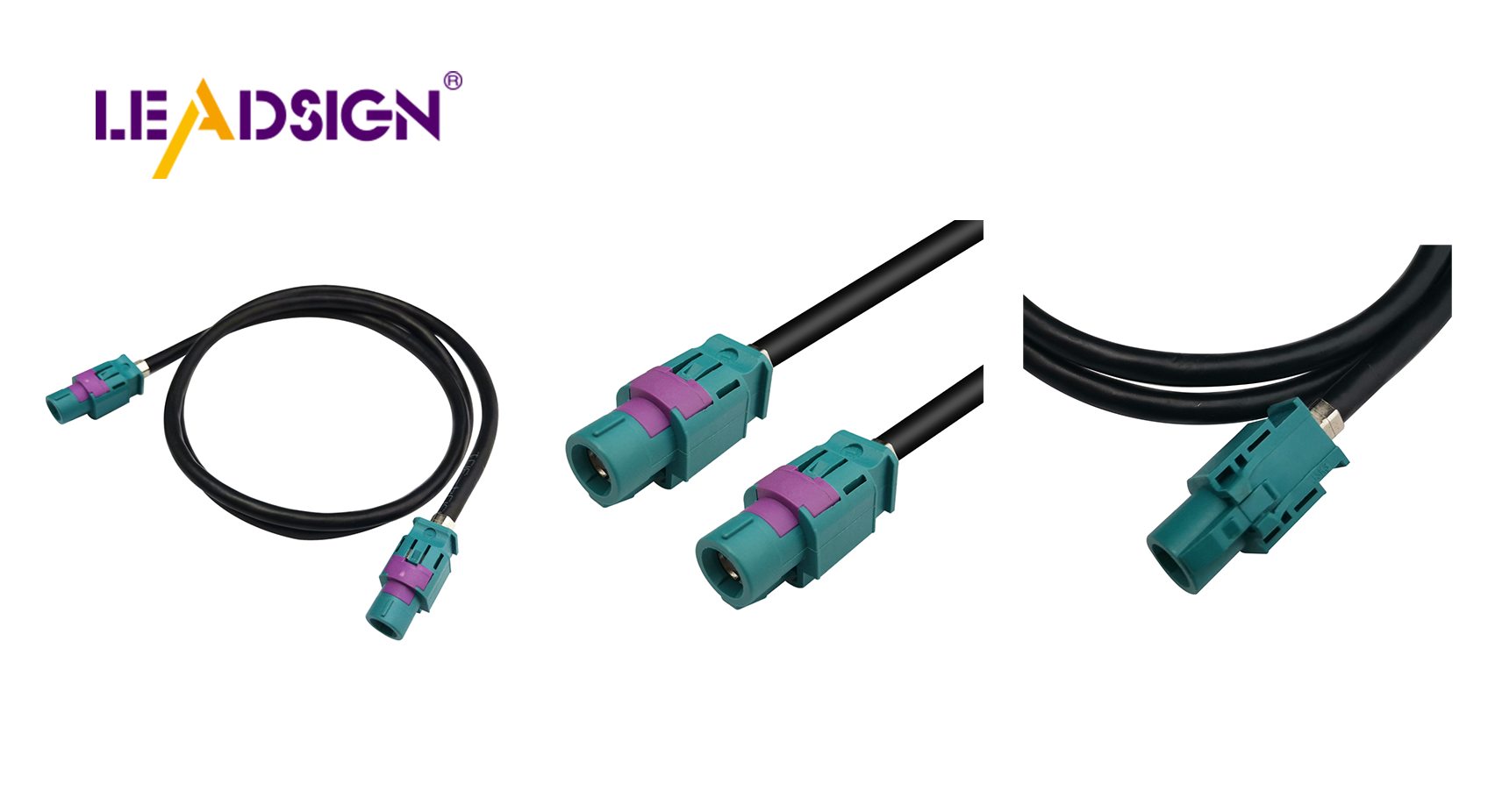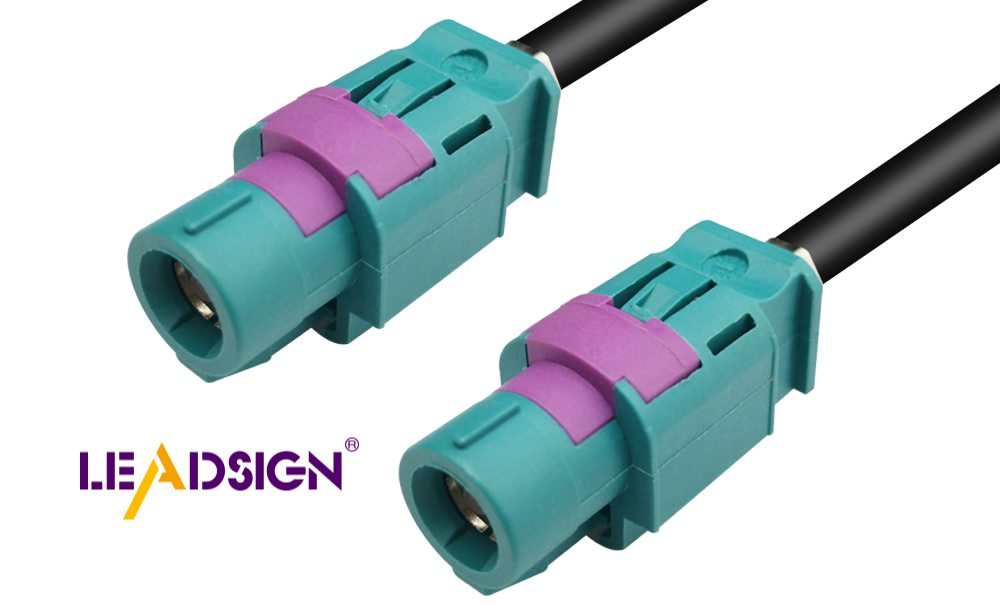Vehicle Connectors Explained: Types, Features, and Applications

Vehicle connectors play a crucial role in ensuring your car operates efficiently every day. They facilitate the movement of power, data, and signals between various components. As modern vehicles incorporate advanced features like ADAS, the demand for high-quality vehicle connectors has increased significantly, as these features rely on reliable connections for safety and comfort. The latest designs are smaller and faster, enhancing their strength and longevity.
Key Takeaways
Understanding the different types of vehicle connectors—power, data, signal, and hybrid—can help you choose the right one for your car's needs, ensuring efficient operation and safety.
Regular maintenance of car connectors, including cleaning and checking for damage, can significantly extend their lifespan and improve vehicle performance.
Selecting connectors that meet industry standards and environmental requirements is crucial for reliability and safety, especially in modern vehicles with advanced features.
Types of Vehicle Connectors

Knowing vehicle connector types helps you understand their importance. They help move power and signals for smooth car operation.
Power Connectors
Power connectors send electricity to parts of your car. They are needed for lights, ignition, and batteries. Bullet connectors allow quick disconnection for easy fixes. Flat connectors fit well in small spaces. Their strong build ensures power flows even in tough conditions.
Data Connectors
Data connectors let car systems talk to each other. They transfer data quickly for navigation, music, and safety features. High-speed connectors can send data very fast, up to 10 gigabits per second. This keeps modern car electronics working smoothly.
Signal Connectors
Signal connectors carry small signals between sensors and controls. They are key for safety systems like airbags and ABS brakes. Square connectors are often used because they handle many signals at once. This ensures quick and accurate responses.
Hybrid Connectors
Hybrid connectors combine power, data, and signals in one piece. They are smaller, easier to install, and save space. These connectors are modular, so fixing them is simple. By doing many jobs at once, they make car systems work better.
Special Connectors for EVs and Advanced Systems
Electric cars need special connectors for their systems. Liquid-cooled connectors handle fast charging. Sealed connectors protect from weather damage. Smaller, lighter designs make cars last longer and use less energy. These features help electric cars meet today’s needs.
Key Features of Automotive Electrical Connectors
Durability and Longevity
Car connectors must handle tough conditions to last long. Strong materials make them durable.
Copper alloys carry electricity well and resist rust.
Special plastics like PEEK stay strong in high heat.
Coatings like gold or nickel stop wear and rust.
Insulators like PTFE and silicone block electricity and resist damage.
Tests check if connectors can handle stress and extreme weather. Heat and rust tests ensure they work in harsh conditions. These features make car connectors reliable and long-lasting.
Weather Resistance and Sealing
Weatherproof connectors protect cars from rain, dust, and heat. Sealed designs keep water and dirt out. Black plastic blocks UV rays, and metal housings add strength. Tests confirm they resist moisture and rust. Using weatherproof connectors keeps car systems working in any weather.
Compatibility with Automotive Standards
Car connectors must follow rules to work well. Common rules include:
Standard | What It Means |
|---|---|
A popular rule for car connectors. | |
QC/T1067-2017 | Another common rule for car connectors. |
GMW3191-2012 | A widely used rule for car electrical parts. |
Rules like SAE J2030 and SAE J1171 focus on design and performance. Following these rules ensures connectors fit your car's system.
High Coding Efficiency and Misconnection Prevention
Car connectors use smart designs to avoid mistakes.
Unique shapes make sure they fit correctly.
Colors show which connectors go together.
Special coding prevents errors during installation.
These features make connectors easy to use and reliable. Choosing these connectors lowers the chance of system problems.
Uses of Car Connectors
Car connectors are important for making cars work well. They are used in many parts of a car to improve safety, performance, and efficiency.
Power Systems
Car connectors help send power to lights, ignition, and batteries. Wire-to-wire connectors are strong and work in tough conditions. They keep power flowing without stopping. This makes sure your car runs smoothly.
Data Systems
Data connectors help car electronics stay connected. Wire-to-board connectors move data between sensors and control units. They support smart systems like IoT and ADAS. With fast speeds, they keep car electronics working well.
Safety Systems
Car connectors link sensors and controllers in safety systems. They are used in airbags and ABS brakes. OEM connectors send power and data quickly. This helps safety systems work fast and reduce accidents.
Entertainment Systems
Modern cars use connectors for music, maps, and calls. Wire-to-board connectors help these systems work fast. They also connect with phones and other devices. This makes driving more fun and easy.
Electric Cars
Electric cars need special connectors to work better. Wire-to-wire connectors send power from the battery to the engine. Sealed connectors block water and dust. Smaller designs make cars lighter and save energy. These features make electric cars more advanced.
Car connectors are key to making cars safer and better. They improve performance and support new technologies, helping cars stay modern.
How to Pick the Best Car Electrical Connectors
Choosing the right connectors helps your car work well. Here are the main things to think about when selecting one.
Checking Power and Voltage Needs
Know your car's electrical needs first. Connectors must handle the system's power to avoid problems. Use this table to help decide:
Factor | What It Means |
|---|---|
Current rating | Make sure connectors handle the system's power to avoid damage. |
Voltage rating | Too much voltage can cause sparks, harm, or danger. |
Number of contacts | More contacts improve signals and prepare for future upgrades. |
Environmental Conditions | Pick connectors that survive heat, cold, and wetness, checked by IP ratings. |
Mechanical factors | Choose connectors that stay secure during bumps and shakes. |
Type of termination | Good wire endings keep signals strong and make assembly easy. |
Material | Plastic is light; metal is strong for tough jobs. |
Thinking About Environmental Factors
Weather and surroundings affect how connectors work. Pick ones that handle heat, water, and rust. IP ratings show how well they last. This table shows what’s needed for different conditions:
Condition | What’s Needed |
|---|---|
Temperature | -65 to 200 degrees |
Humidity | 90%-95% for 96 hours |
Salt Spray | 48 hours in salt mist |
Vibration/Shock | Must pass tests |
Liquid Immersion | Must stay sealed |
Following Industry Rules
Connectors must meet rules to be safe and fit well. Look for these standards:
ISO 6722: Handles heat and rust.
ISO 26262: Keeps important systems safe.
IEC 61076: Covers design needs.
SAE J2030: Works in real-world use.
SAE J1171: Ensures good design and testing.
Using approved connectors keeps your car safe and working well.
Checking Connector Design and Fit
Connector design affects how well it fits your car. Look for these features:
Strong and steady contact materials.
Secure connections that don’t loosen.
Tough designs for bumps and shakes.
Works with fast communication systems.
OEM connectors fit perfectly with your car’s original parts. Installing them correctly helps them last longer and work better.
Picking the right connector means knowing your car’s needs, weather challenges, and rules. By thinking about these, you’ll get reliable and long-lasting connectors.
Tips for Taking Care of and Fixing Car Connectors
Check and Clean Often
Keeping car connectors clean helps them last longer. Look for dirt, rust, or damage regularly. Use a soft cloth and mild soap to clean them. For rust, gently scrub with a wire brush. Add a protective coating to stop rust from coming back. Always check for loose or broken connectors and replace them quickly. Clean connectors stop problems and keep your car working well.
Spot and Fix Common Problems
Car connectors can get rusty, loose, or too hot. Rust happens from water or road salt and lowers power flow. Loose connectors can cause systems to stop working sometimes. Overheating happens if the wrong amount of power is used. Check connectors for damage and replace bad ones right away. Use the right tools to attach them securely. Protect connectors near strong signals to avoid interference.
Handle and Store Carefully
Be gentle with car connectors to avoid breaking them. Follow the maker’s instructions and use the right tools. Don’t bend or twist them, as this can weaken them. Store connectors in sealed bags or containers to keep out dust and water. Check stored connectors often for rust or damage. Careful handling and storage make connectors last longer.
Know When to Replace or Upgrade
Replace connectors if they are rusty, worn out, or broken. If you upgrade your car’s system, make sure the connectors fit the new setup. Better-quality connectors improve how your car works. Always pick connectors that follow safety and quality rules.
Taking care of car connectors keeps your car running well. Regular care saves money and improves performance.
Car connectors help your car work properly. Using strong materials like copper makes them safer and better. Following rules ensures they fit and work well. Picking original car connectors avoids mistakes and improves how they perform. Cleaning and checking them often helps them last longer. Always choose connectors that are tough and match your car's needs.
FAQ
What do vehicle connectors do?
Vehicle connectors move power, data, and signals in a car. They help systems like safety features, entertainment, and charging work well.
How can you take care of vehicle connectors?
Check them often for dirt or rust. Use a soft cloth and soap to clean. Replace broken connectors quickly to prevent problems.
Can one connector work for all car systems?
No, each system needs a specific connector type. Pick connectors that match your car’s power, data, or environment needs.
See Also
Enhancing Automotive Data Flow With Innovative Connectors
Transforming Vehicle Connectivity Through HFM Connector Benefits
Understanding the Advantages of Fakra Connectors in Vehicles
Boosting Data Transfer: Significance of High-Speed Connectors

